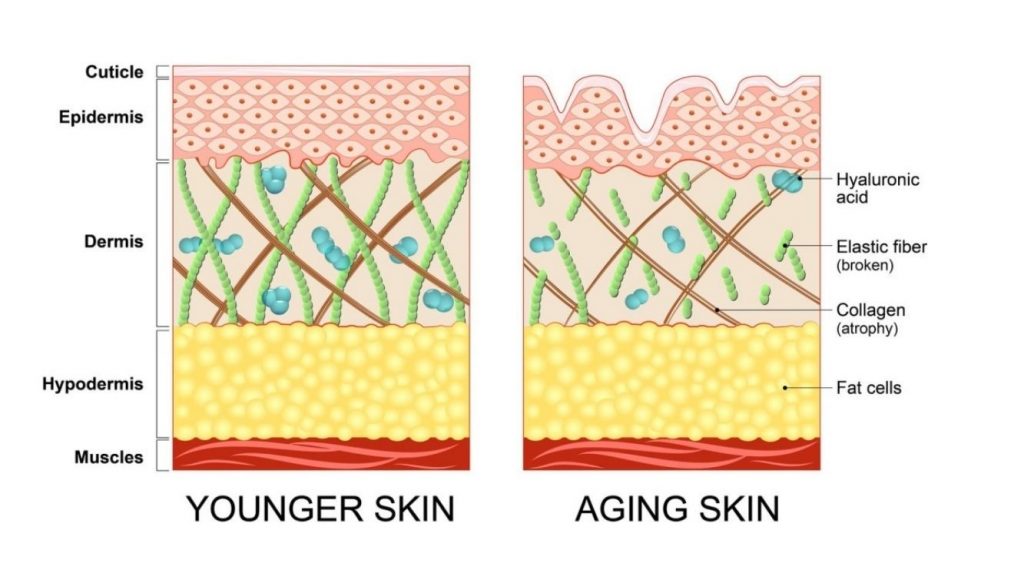The Histology of Skin Ageing
As the body ages, the appearance and characteristics of the skin alter. The epidermis becomes thinner, so blemishes become more visible, and collagen in the dermis is gradually lost, contributing to the formation of facial lines, sagging skin and wrinkles. As we age, the dermal layer thins, less collagen is produced, and the elastin fibres, which provide our elasticity, wear out, and all the changes in the scaffolding of the skin cause it to wrinkle and sag. In simple terms, our skin loses laxity and texture as we grow older. It becomes loose, it sags, and lines and wrinkles appear. Think of it like the scaffolding of a building; if it were to rust, weaken and become unable to bear load or maintain flexibility – it would eventually sag and collapse.

Changes that occur during the Process of Skin Ageing
When considering the ageing of the skin, it is important to understand that the ageing process is not taking place in the top layers of the skin but several millimetres below the epidermis in the dermis. Much of the changes associated with ageing occur in the dermis, which is mostly composed of a dense, collagen-rich extracellular matrix (ECM) that provides structure and support for the skin cells and gives tensile strength and firmness to the skin.
